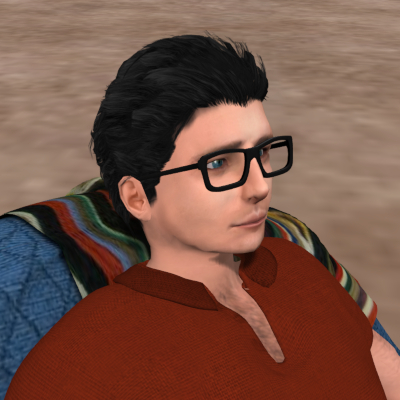

Is there a reason why you started this conversation? Something you’d like us to do?
Yes.
When I post images on Hubzilla, I always describe them. I have connections not only within Hubzilla, but mostly on Mastodon and also elsewhere (Pleroma, Akkoma, Misskey, Firefish etc. etc., all over the place).
The problem I have is three-fold: One, my images are extreme edge-cases topic-wise. They’re about 3-D virtual worlds. Very obscure 3-D virtual worlds. As in, maybe one out of 200,000 Fediverse users even knows the underlying system, and I’m not even talking about the specific place where I’ve taken an image. This makes very extensive image descriptions necessary because I can’t suppose that people already know what whatever is in the images looks like. And it makes very extensive explanations within the image descriptions necessary so that people get the images in the first place.
I can’t take anything about my pictures for common knowledge. I need over 1,000 characters alone to explain where an image is from.
Two, I’m not bound to the same limitations as your average Fediverse user when it comes to describing the image. I don’t only look at the image when I’m describing it. I look at the real deal in-world when I’m describing it. This gives me an almost infinite zoom factor. I can see things in-world that are so tiny in the image that they’re invisible. I can describe and actually have described in the past images within my image. And nearly on the same level as the image that I was actually describing.
Three, I’m not bound to the same limitations as your average Mastodon user when it comes to posting an image description. I am bound to the 1,500-character alt-text limit because Mastodon truncates longer alt-text and throws the excess characters away. But I do not have a 500-character limit. I don’t have any character limit at all. I can post 80,000 characters, and Mastodon will show these 80,000 characters, all of them, and so will other Fediverse projects.
So I can put full, detailed image descriptions of nearly any length into the post text body. This is completely unimaginable on Mastodon. And that’s why I can’t discuss these things with Mastodon users: They can’t even imagine what I’m doing.
Anyhow, this leads me into situations which are just as completely unimaginable for Mastodon users, which I therefore can’t discuss with people who only know Mastodon. And this raises questions for me which people who only know Mastodon can’t answer because they can’t even imagine why I’d ask something like that, because the very concept is alien to them.
This started early on in last summer when I started to seriously describe my images after I had found out that many Mastodon users like highly detailed image descriptions. My first attempt at writing one ended with over 13,000 characters of image description, and I couldn’t possibly reduce them without losing content. So I wanted to know where the best place to put such a long image description would be. I didn’t even get an answer. So I had to figure out from other posts and their replies that it’s always best to keep image descriptions and explanations as close to the image as possible, i.e. in the same post. I’m still not sure if that’s what Mastodon users, especially disabled users, would prefer in my case.
Then more and more questions came up.
Do I have to describe images in images? Images in images in images?
For example, the rule is that if there’s text within the borders of the image, it must be transcribed. However, this rule does not define edge-cases because it doesn’t take edge-cases into consideration. What about text that’s so small in the image that it’s visible, but illegible (3 pixels high)? Or text that’s so small in the image that it’s invisible (less than a pixel high)? Or text that’s partly obscured in the image (poster-sized sign with a tree trunk in front of it)? Must I, may I or mustn’t I transcribe it? Again, let’s suppose that I can read it in-world with no problems.
Or from which point on is it required to warn about eye contact? (I actually got an answer to this from someone who knows. If an eye can be made out in an image, then an eye contact warning is necessary. I was told that, yes, there are autistic persons who are triggered by an eye that’s 1/100th of a pixel high and 1/100 of a pixel wide.)
All stuff that you never think about when all you ever post are fairly simple real-life photographs.
I do not want to discuss these topics in this thread! If anything, my plan is to start separate threads for each of these.
My goal is simply to find a place where I can discuss them with people who know enough to be able to give me sensible answers that I can work with.
If you think this Lemmy community is such a place, then I’ll stay and ask away, and then and only then I’d like to see competent answers to my questions.
But if you think that nobody here will be able to understand what I want because what I’m asking is just too alien for everyone here, then it doesn’t make sense to try and ask.
At least hardly anyone on Lemmy believes the Fediverse was invented by Eugen Rochko in 2022 as a reaction upon Elon Musk’s announcement to buy Twitter.